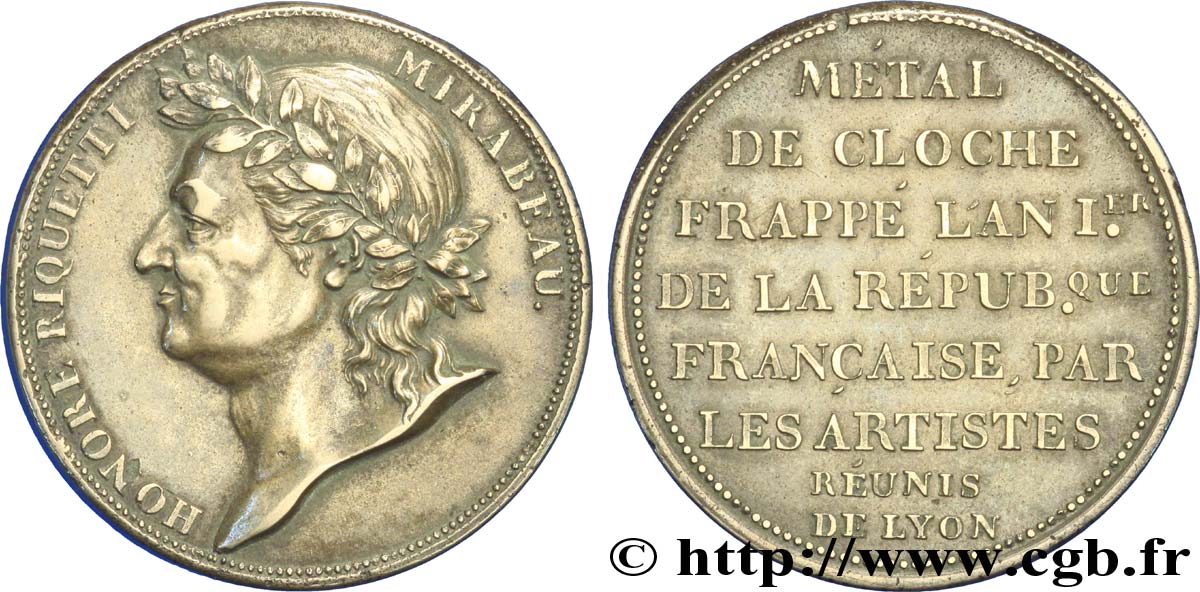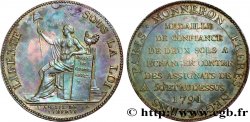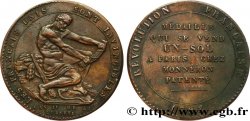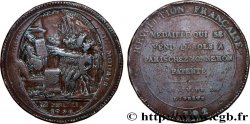fjt_257563 - REVOLUTION COINAGE Essai de Galle à l'effigie de Mirabeau 1792
Количество
Добавить в корзину

Тип Essai de Galle à l'effigie de Mirabeau
Дата: (1792)
Дата: 1792
Монетный двор / Город: Lyon
Металл: copper
Диаметр: 34 mm
Ориентация осей монеты: 12 h.
Век: lisse
Редкость: R1
Ссылки в каталоге: :
Лицевая сторона
Аверс: легенда: HONORE RIQUETTI / MIRABEAU..
Аверс: описание: Tête laurée à gauche de Mirabeau.
Обратная сторона
Реверс: легенда: MÉTAL / DE CLOCHE / FRAPPÉ L’AN IER. / DE LA RÉPUB.QUE / FRANÇAISE, PAR / LES ARTISTES / RÉUNIS / DE LYON.
Реверс: Описание: en neuf lignes dans le champ.
Комментарий
La qualité du métal est remarquable par rapport aux frappes monétaires usuelles dites en “métal de cloche”.
Mirabeau (1749-1791) venait d'être nommé président de l'Assemblée quand il mourut le 2 avril. Il fut décidé que son corps serait transporté au Panthéon, affecté dès le 3 avril 1791 pour recevoir les grands hommes. Mirabeau fut le premier à y être inhumé. Il en sera enlevé et remplacé par Marat après le rapport défavorable de Chénier le 25 novembre 1793. D’après Hennin, p. 251, “le 25 août 1792, le député Reboul fit un rapport à l’Assemblée Législative sur des nouveaux procédés indiqués par des artistes de Lyon pour fabriquer des monnaies en métal de cloche, beaucoup plus parfaites que celles qui avaient été frappées, jusque-là. Il cita dans ce rapport de belles médailles qui avaient été présentées aux comités par ces mêmes artistes comme modèles et essais de ce qu’ils proposaient de faire en grand”. L’Assemblée Nationale adopta plusieurs décrets pour leur frappe.
Mirabeau (1749-1791) venait d'être nommé président de l'Assemblée quand il mourut le 2 avril. Il fut décidé que son corps serait transporté au Panthéon, affecté dès le 3 avril 1791 pour recevoir les grands hommes. Mirabeau fut le premier à y être inhumé. Il en sera enlevé et remplacé par Marat après le rapport défavorable de Chénier le 25 novembre 1793. D’après Hennin, p. 251, “le 25 août 1792, le député Reboul fit un rapport à l’Assemblée Législative sur des nouveaux procédés indiqués par des artistes de Lyon pour fabriquer des monnaies en métal de cloche, beaucoup plus parfaites que celles qui avaient été frappées, jusque-là. Il cita dans ce rapport de belles médailles qui avaient été présentées aux comités par ces mêmes artistes comme modèles et essais de ce qu’ils proposaient de faire en grand”. L’Assemblée Nationale adopta plusieurs décrets pour leur frappe.








 Cообщить об ошибке
Cообщить об ошибке Распечатать страницу
Распечатать страницу Отправить мой выбор
Отправить мой выбор Задать вопрос
Задать вопрос Consign / sell
Consign / sell
 Информация
Информация



